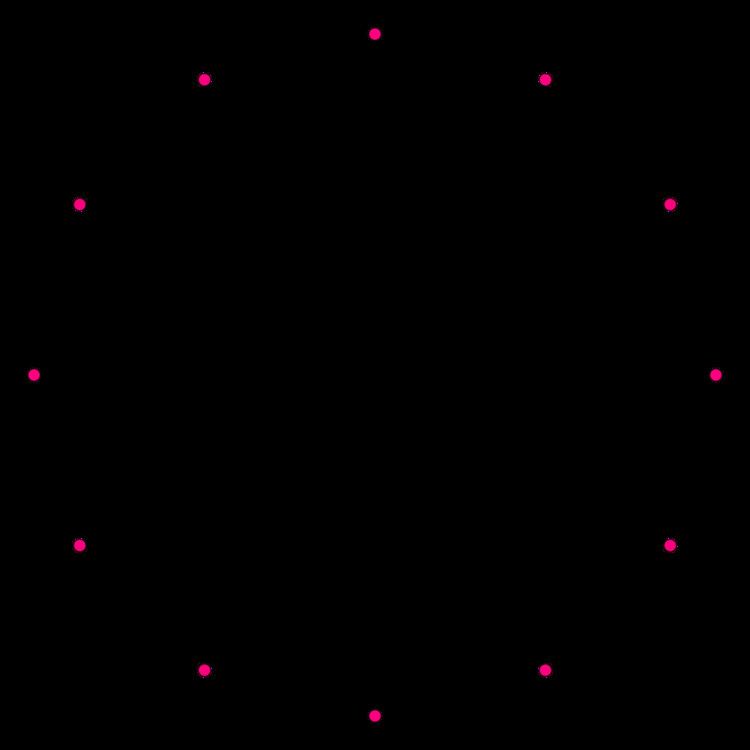Schläfli symbol {12/5}t{6/5} Internal angle (degrees) 30° | Edges and vertices 12 Symmetry group Dihedral (D12) Dual polygon self | |
 | ||
A dodecagram is a star polygon that has 12 vertices. There is one regular form: {12/5}. A regular dodecagram has the same vertex arrangement as a regular dodecagon, which may be regarded as {12/1}.
Contents
The name dodecagram combine a numeral prefix, dodeca-, with the Greek suffix -gram. The -gram suffix derives from γραμμῆς (grammēs) meaning a line.
Isogonal variations
A regular dodecagram can be seen as a quasitruncated hexagon, t{6/5}={12/5}. Other isogonal (vertex-transitive) variations with equal spaced vertices can be constructed with two edge lengths.
Dodecagrams as compounds
There are four regular dodecagram star figures, {12/2}=2{6}, {12/3}=3{4}, {12/4}=4{3}, and {12/6}=6{2}. The first is a compound of two hexagons, the second is a compound of three squares, the third is a compound of four triangles, and the fourth is a compound of six straight-sided digons.
Complete graph
Superimposing all the dodecagons and dodecagrams on each other – including the degenerate compound of six digons (line segments), {12/6} – produces the complete graph K12.
Regular dodecagrams in polyhedra
Dodecagrams can also be incorporated into uniform polyhedra. Below are the three prismatic uniform polyhedra containing regular dodecagrams.
